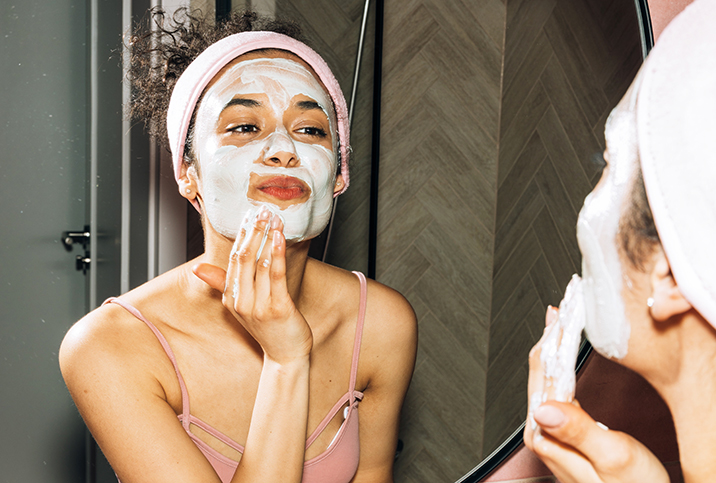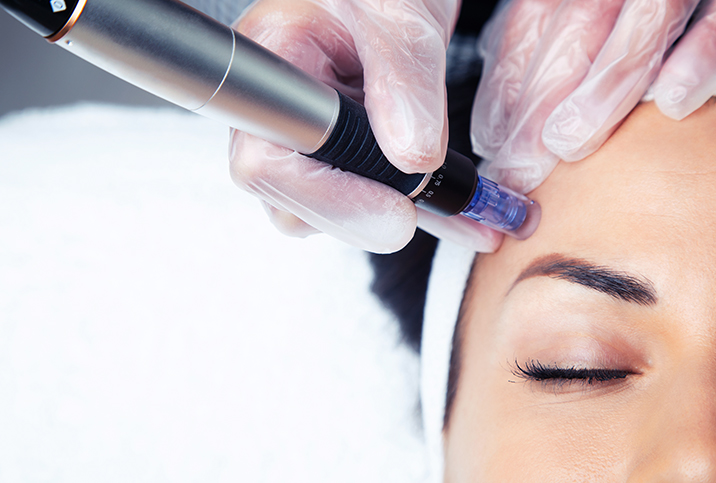5 Skincare Ingredients That Actually Work

Aside from plastic surgery, not even the most high-end treatments will give you glowing, supple, youthful skin if you’re routinely exhausted, stressed, dehydrated and can’t remember the last time you ate a vegetable. For most of us, maintaining great skin requires a multipronged approach, including a healthy lifestyle and a robust skincare regimen.
Unfortunately, no thanks to Instagram or the internet in general, it’s now more challenging than ever to decipher what purported wonder products are legit and which are beautifully packaged, exceptionally marketed wastes of time. Sometimes it takes a little digging into the science.
Retinoids
Retinoids are a multifaceted ingredient primarily used in "anti-aging" products. They can hydrate the skin, treat acne and reduce pigmentation irregularities, fine lines and wrinkles and improve skin texture and tone.
The most prevalent retinoid is retinol, derived from vitamin A. Others include retinal aldehyde and retinyl esters. Tretinoin, a stronger version of retinol, is used in prescription products Retin-A and Renova. Another similar ingredient, retinyl palmitate, is similar but less potent than retinol.
Retinoids work by promoting skin cell turnover and faster regeneration and inhibiting collagen breakdown. The caveat is this process can be irritating and cause redness and flaking. If you experience adverse side effects, try using less product (about a pea-size drop for your entire face is best) or switching between a regular moisturizer and your retinol product. Retinol is inactivated by sunlight, so only use it at night.
Hyaluronic acid
Hyaluronic acid can pack a powerful punch when it comes to hydration and as a result, plumping. This molecule can hold up to 1,000 times its weight in water and essentially works by drawing in moisture and locking it into the skin. As you probably know, lack of moisture is one of the main culprits in skin aging.
This super-moisturizer is a naturally occurring sugar produced in the human body and primarily found in the skin. But, like collagen, the natural aging process decreases its prevalence over time, leaving us high and dry—and wrinkle-prone.
You can get hyaluronic acid as a supplement or topical product, both of which can be effective. Keep in mind hyaluronic acid can only work with what it’s got, moisture-wise. If applying it topically, use it either in conjunction with a moisturizer or on slightly damp skin.
Beta & alpha hydroxy acids
Beta hydroxy acids (BHAs) and alpha hydroxy acids (AHAs) can be powerful exfoliants, removing dead skin and infiltrating follicles.
In beta hydroxy acid, two carbon atoms separate the molecule’s hydroxy component from its acid component. In alpha hydroxy acids, another common skincare ingredient, only one carbon atom separates the hydroxy from acid components.
AHAs include glycolic, lactic, tartaric and citric acids. These are primarily used to reduce the appearance of fine lines and wrinkles and age spots. They may also correct pigmentation irregularities and shrink pores. If you want to try AHAs, start with a product with a maximum of 10-15 percent AHA content, as these products can cause mild irritation. AHAs can also increase sun sensitivity, so consider wearing plenty of sunscreen along with a wide-brimmed hat or using AHAs only when you know you won’t be exposed to the sun (such as at night).
BHAs (salicylic acid included), which are derived from willow bark, have long been among dermatologists' go-to ingredients for acne treatment. BHAs tend to work better than AHAs for this purpose because they’re oil-soluble rather than water-soluble. Some stronger versions require a prescription, but there are many over-the-counter versions available. Research indicates BHAs are less likely to irritate compared to AHAs.
L-ascorbic acid
Vitamin C is one of the most prevalent skincare ingredients on the market, touted for its powerful antioxidant properties. Antioxidants serve a few purposes, including reducing damage from oxidative stress caused by pollution and sun damage.
But vitamin C is unique in that it’s the only antioxidant science has proven can stimulate the synthesis of collagen, the all-important protein essential for your skin’s structure, suppleness and elasticity. This is why vitamin C reduces the appearance of fine lines, wrinkles and scars and brightens skin tone.
But not all vitamin C is created equal. The only type likely to change your skin is L-ascorbic acid. It’s also best to use vitamin C in serum rather than as a toner or moisturizer, as serums penetrate deeper into the skin. Using it in conjunction with another antioxidant, such as vitamin E or alpha-lipoic acid, further amplifies its benefits.
Alpha-lipoic acid
Another powerful antioxidant that may have anti-aging properties is alpha-lipoic acid (ALA), also known as lipoic acid. It’s not new, but our knowledge of its potent powers is. Research shows it can protect skin from free radical damage and repair existing damage. It’s also soluble in water and oil, meaning it can infiltrate all parts of the cell.
ALA can promote hydrated, supple, glowing skin and diminish and prevent fine lines. It’s also a natural exfoliant and can clear pores to prevent breakouts. However, unlike AHAs, it’s unlikely to irritate the skin.
Alpha-lipoic acid is naturally found in foods including organ meats, spinach, broccoli, offal and rice bran and can be taken as a supplement or applied topically.
The skincare and beauty industry is a money machine and will always be developing new buzz words and hyping new trends to squeeze a few more pennies out of consumers. But keeping an eye out for key ingredients will save your wallet as well as your skin.


















